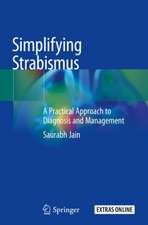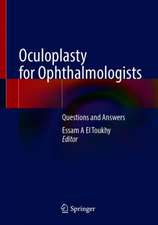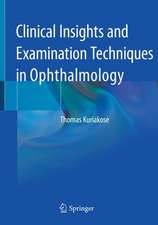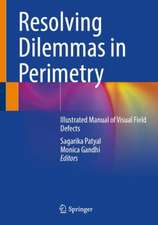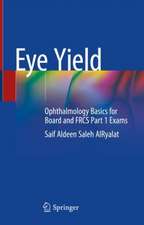Geriatric Orthoptics & Non-Paretic Diplopia in Adults
Autor Elfriede Stangler-Zuschrotten Limba Engleză Paperback – sep 2016
Preț: 757.76 lei
Preț vechi: 797.64 lei
-5% Nou
145.02€ • 150.84$ • 119.72£
Carte disponibilă
Livrare economică 24 martie-07 aprilie
Specificații
ISBN-10: 1634852443
Pagini: 130
Dimensiuni: 155 x 230 mm
Editura: Nova Science Publishers Inc
Colecția Nova Science Publishers Inc
Cuprins
For Complete Table of Contents, please visit our website at: https://www.novapublishers.com/catalog/product_info.php?products_id=58989
Descriere
Elderly patients are often afflicted with the onset of a convergent strabismus as a sign of aging, without any other neurologic disorder. Unfortunately, physicians and even ophthalmologists are generally unaware of this fact. Consequently, such patients fail to find timely help for their double vision. In addition, there are other geriatric alterations (such as cataracts, glaucoma and age-related maculopathy), which are connected with binocularity disorders but do not always result in double vision. These masked diplopia are only perceptible as the closing of one eye and the patients complaint of seeing clouds. Erroneous diagnoses have a dramatic outcome for many elderly people whose ability to read is vitally important for their quality of life. Studies on this topic and suggestions for improving the patients situation are contained in this book. The book also covers intractable diplopia, or "horror fusionis", which is particularly difficult to understand. Examinations of the micromotility of the eyes could explain some of the puzzling observations. Although eye muscle palsies are generally outside the scope of this books focus, connections between neuro-ophthalmology (e.g. in Parkinson's disease) and reading problems due to convergence insufficiency are discussed. Finally, this book examines what happens in adulthood to the numerous patients whose squints were operated on during childhood. Many of these patients later suffer problems such as double vision, which may be misinterpreted as eye muscle palsy. This book is not a textbook of orthoptics. It seeks to provide advanced training for ophthalmologists based on the authors personal experiences collected over fifty years of practice as an ophthalmologist and specialist for strabismology at the Medical University of Viennas eye clinic and in her own office. As far as the author is aware, it is the first book to be published exclusively on this topic. The previously unpublished research and experiences it contains should provoke the interest of colleagues and orthoptists whose elderly patients present with binocularity, a condition which sadly remains underestimated.






